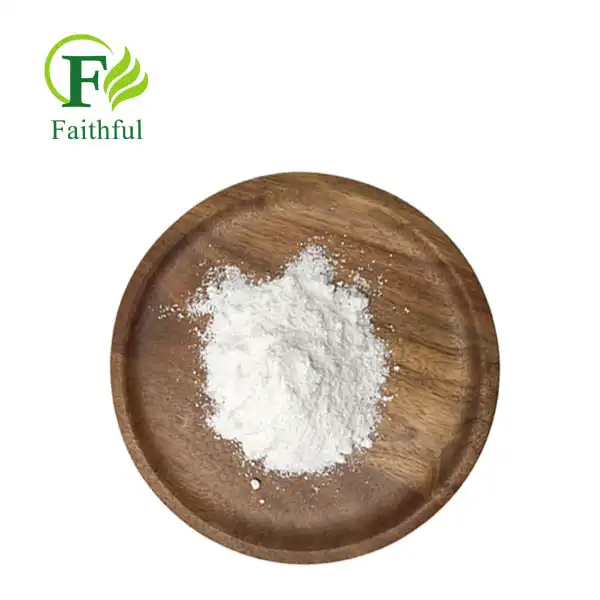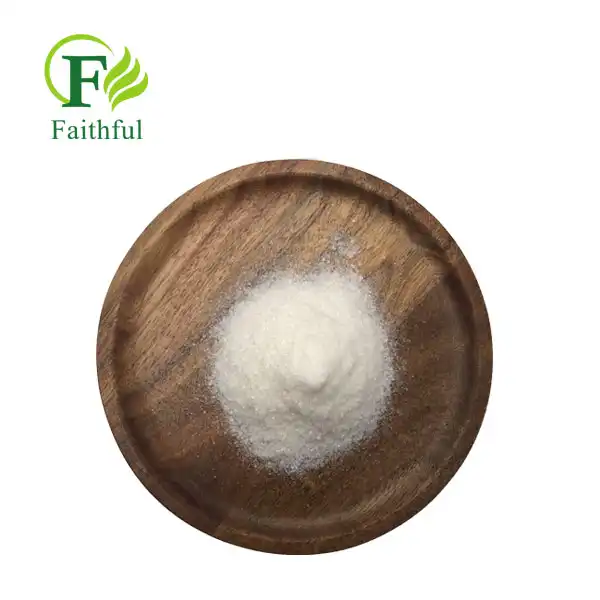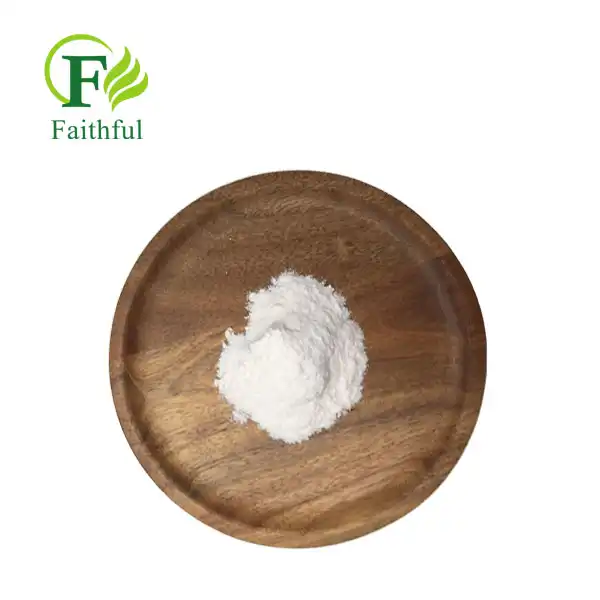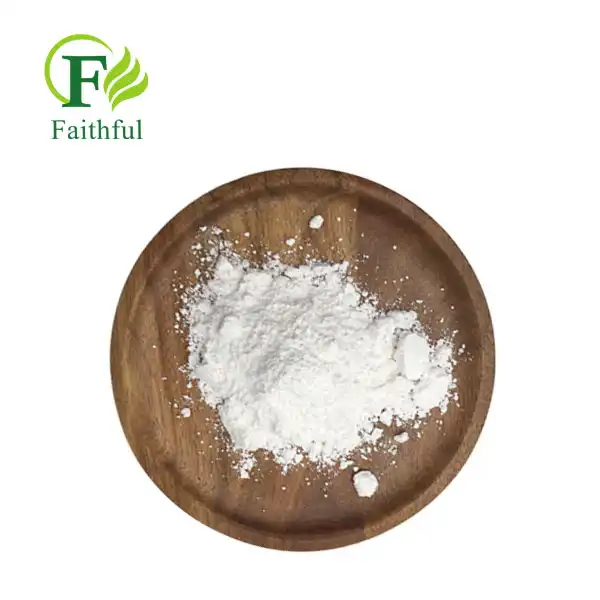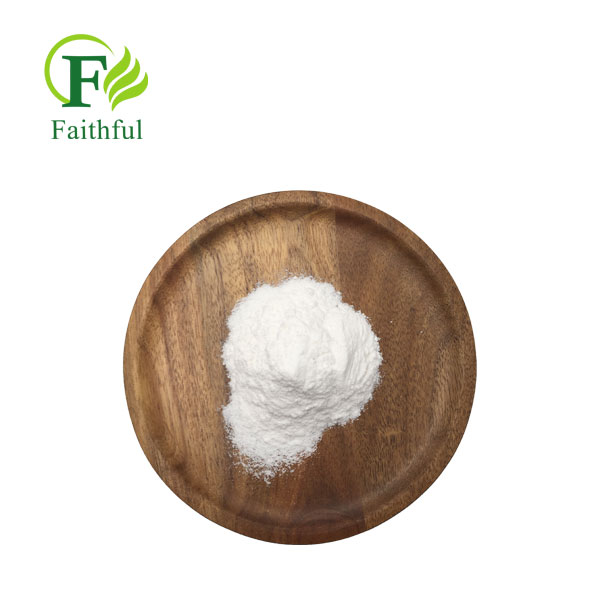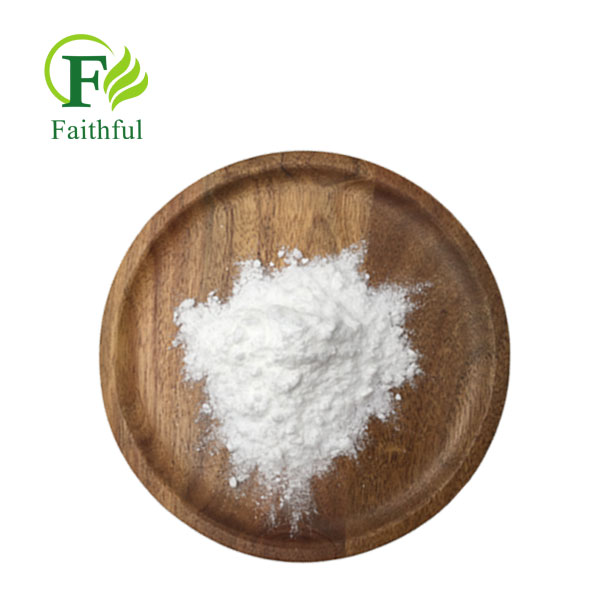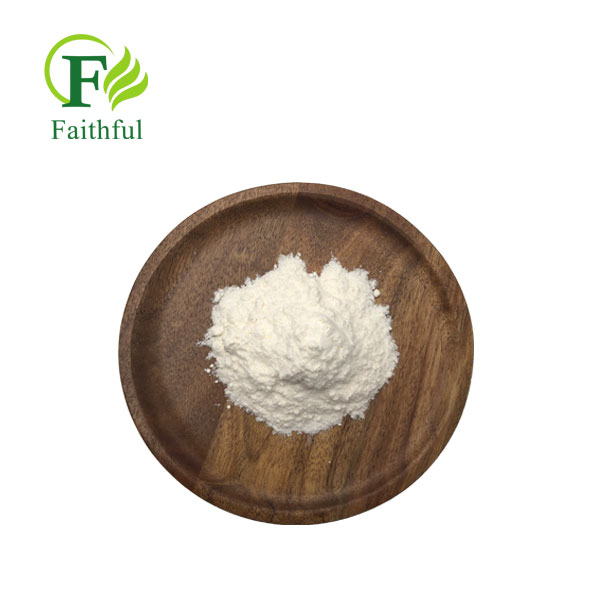How Does Yohimbine Hydrochloride Powder Affect Alpha-2 Receptors?
Alpha-2 adrenergic receptors are very important for controlling the release of neurotransmitters, the function of blood vessels, and metabolic activities all over the body. Yohimbine hydrochloride powder functions as a selective alpha-2 adrenergic receptor antagonist, blocking these receptors to produce significant physiological effects. This alkaloid compound comes from the bark of the Pausinystalia yohimbe tree. It has a strong attraction to alpha-2 receptors but doesn't interact much with other types of receptors.When yohimbine hydrochloride powder binds to alpha-2 receptors, it prevents the normal inhibitory feedback mechanisms that regulate norepinephrine and epinephrine release. When this receptor is blocked, the sympathetic nervous system becomes more active, neurotransmitters become more available, and the heart responds differently.We may be able to learn more about how yohimbine hydrochloride powder can be used as a drug and in medicine by looking into how it affects alpha-2 receptors.

Molecular Mechanisms of Alpha-2 Receptor Antagonism
Binding Affinity and Receptor Selectivity
Yohimbine hydrochloride powder exhibits exceptional selectivity for alpha-2 adrenergic receptors through its unique molecular structure that provides optimal binding geometry. Nanomolar amounts of the chemical bind to alpha-2A, alpha-2B, and alpha-2C receptor subtypes. Depending on the subtype, Ki values range from 1 to 10 nM. This high affinity results from hydrogen bonding interactions between the indole alkaloid structure and specific amino acid residues within the receptor binding pocket. Studies demonstrate that yohimbine hydrochloride powder is around 40 times more selective for alpha-2 receptors than alpha-1 subtypes. This means that it has targeted pharmacological effects with very little off-target activity. The chemical binds to receptors rapidly and then slowly dissociates from them, allowing its harmful effects to persist, as shown by its binding kinetics. Yohimbine hydrochloride powder blocks endogenous catecholamines from triggering typical inhibitory signaling cascades, according to structural studies, by occupying the orthosteric binding site.
Intracellular Signaling Disruption
Alpha-2 receptors normally couple to Gi/Go proteins to inhibit adenylyl cyclase activity and reduce cyclic adenosine monophosphate (cAMP) levels. Yohimbine hydrochloride powder blocks this inhibitory pathway by preventing receptor-G protein coupling, effectively removing the brake on cAMP-dependent signaling. This disturbance causes protein kinase levels to rise. A activation and increased phosphorylation of downstream targets, such as tyrosine hydroxylase, which is the enzyme that slows down the production of catecholamines. Additionally, yohimbine hydrochloride powder prevents alpha-2 receptor-mediated activation of potassium channels and inhibition of calcium channels, altering cellular excitability and neurotransmitter release patterns. The drug also stops alpha-2 receptors from affecting mitogen-activated protein kinase pathways, which affects how cells grow and change. These several kinds of signaling problems cause complicated physiological responses that go beyond just changing neurotransmitter levels.
Presynaptic vs Postsynaptic Receptor Effects
Yohimbine hydrochloride powder produces distinct effects depending on whether it targets presynaptic or postsynaptic alpha-2 receptors. At presynaptic terminals, the compound blocks autoreceptors that normally provide negative feedback to limit norepinephrine release. This results in enhanced neurotransmitter spillover and increased synaptic concentrations of catecholamines. Studies show that yohimbine hydrochloride powder can increase norepinephrine release by up to 300% in certain brain regions through presynaptic alpha-2 receptor antagonism. Postsynaptically, the compound blocks receptors that mediate inhibitory responses to norepinephrine and epinephrine, effectively amplifying sympathetic signaling. The differential distribution of alpha-2 receptor subtypes creates region-specific responses to yohimbine hydrochloride powder, with alpha-2A receptors predominating in the locus coeruleus and alpha-2C receptors more abundant in the hippocampus and cortex. This heterogeneous distribution allows for targeted therapeutic effects while minimizing unwanted systemic responses.
Physiological Consequences of Alpha-2 Receptor Blockade
Cardiovascular System Responses
Yohimbine hydrochloride powder has effects on the heart and blood vessels mainly because it blocks alpha-2 receptors in both the brain and the body. The drug predominantly affects alpha-2 receptors in the brainstem, which usually inhibit the flow of sympathetic signals. This raises the heart rate and blood pressure. Yohimbine hydrochloride powder works against vascular alpha-2 receptors that help blood vessels open up, which could make some blood vessels close up. However, the overall effect on the cardiovascular system is complicated because of the interplay between increased norepinephrine release and direct receptor blockage. Studies show that yohimbine hydrochloride powder can raise cardiac output by 15–25% by acting as both a chronotropic and an inotropic agent. The chemical also changes how sensitive baroreceptors are and how well the autonomic nervous system works, which could cause adaptive responses that might partially cancel out the original cardiovascular stimulus. Researchers who want to learn more about how the sympathetic nervous system functions and how the heart and blood vessels are controlled can use yohimbine hydrochloride powder because of its effects on the heart and blood vessels.
Metabolic and Thermogenic Effects
Alpha-2 receptor antagonism by yohimbine hydrochloride powder produces significant metabolic consequences through enhanced sympathetic nervous system activity. The substance boosts lipolysis by blocking alpha-2 receptors on fat cells that ordinarily stop fat from breaking down. At the same time, it boosts beta-adrenergic stimulation of hormone-sensitive lipase. Studies indicate that yohimbine hydrochloride powder can increase free fatty acid mobilization by up to 50% during periods of sympathetic activation. The chemical also boosts thermogenesis by making norepinephrine more available at brown adipose tissue. This causes the expression of uncoupling protein-1 and the creation of heat. Yohimbine hydrochloride powder also affects how glucose is used by changing the activity of pancreatic alpha-2 receptors, which control the release of insulin and glucagon. These metabolic effects change the way the body uses energy and substrates, and these changes last for several hours after the drug is taken. Yohimbine hydrochloride powder is very intriguing for metabolic research since it increases lipolysis and thermogenesis at the same time.
Neuroendocrine System Modulation
Yohimbine hydrochloride powder stops alpha-2 receptors from working, which has a large influence on the hypothalamic-pituitary-adrenal axis in a number of ways. The drug stops alpha-2 receptors from working, which usually stops the release of corticotropin-releasing hormone. As a result, the body makes more cortisol and adrenocorticotropic hormone. Studies have shown that yohimbine hydrochloride powder can raise plasma cortisol levels by 200–400% in just 2–3 hours after being taken. It also regulates how much growth hormone is released by interacting with alpha-2 receptors in a complex way in the pituitary gland and hypothalamus. Yohimbine hydrochloride powder also affects the release of prolactin by blocking dopaminergic alpha-2 receptors that control the function of prolactin-inhibiting factors. These effects on the neuroendocrine system make the body react in ways that change how it handles stress, how it reproduces, and how it burns calories. Hormonal responses to yohimbine hydrochloride powder can be very different in terms of how strong and how long they last, depending on the dose, the time of day, and the person's body.
Clinical Applications and Research Implications
Pharmacological Research Tool Applications
They use yohimbine hydrochloride powder to learn more about how alpha-2 receptors work in a lot of different living creatures. By taking this medicine, you can learn more about how the sympathetic nerve system controls the heart and blood vessels.With this powder, which only affects alpha-2 receptors, you can really learn about adrenergic signaling. Alpha-2 receptors are very important for controlling pain, nervousness, and brain function, according to researchers who used yohimbine hydrochloride powder. They can study how alpha-2 receptors work in the central nervous system without having to use inhibitors that only work on the edges because this drug can cross the blood-brain barrier. In behavioral medicine, yohimbine hydrochloride powder is used to make people feel stressed out so that experts can see how they handle stress and what makes them strong. We learn more about adrenergic receptors and how they work through this kind of study.
Therapeutic Potential and Development
The therapeutic applications of yohimbine hydrochloride powder stem from its ability to modulate sympathetic nervous system activity through selective alpha-2 receptor antagonism. Some medical tests have looked at this chemical to help with a number of problems, such as erectile dysfunction, where stopping alpha-2 receptors may make blood flow to the penis better and stimulate nerves. Researchers have also looked into yohimbine hydrochloride powder as a possible way to help some types of depression, especially those where there are issues with how noradrenergic receptors work. People are interested in using the molecule to help with weight reduction since it can speed up lipolysis and thermogenesis, which might help people lose weight. Studies on yohimbine hydrochloride powder for orthostatic hypotension show promise since the ingredient may help keep blood pressure stable when you shift positions by increasing sympathetic tone. But because alpha-2 receptor antagonism has a complicated pharmacology, dose, timing, and individual patient considerations need to be carefully thought about in order to have the best therapeutic results with the fewest adverse effects.
Quality Considerations and Pharmaceutical Standards
High-quality yohimbine hydrochloride powder requires sophisticated purification and standardization processes to ensure consistent pharmacological activity and safety profiles. The compound must be extracted and processed using methods that preserve its molecular integrity while removing potentially harmful contaminants or impurities. Analytical testing of yohimbine hydrochloride powder includes high-performance liquid chromatography to verify purity levels typically exceeding 98%, along with spectroscopic methods to confirm structural identity. To achieve strict regulatory criteria, pharmaceutical-grade material has to go through extra tests for heavy metals, leftover solvents, and microbiological contamination. Yohimbine hydrochloride powder's stability relies on how well it is stored, which means keeping it out of light, moisture, and high temperatures that might break down the active ingredient. Manufacturing facilities producing yohimbine hydrochloride powder must adhere to Good Manufacturing Practice guidelines to ensure batch-to-batch consistency and quality control. These quality assurance measures are essential for both research applications and potential therapeutic development of yohimbine-based formulations.

Conclusion
Yohimbine hydrochloride powder has complicated drug effects because it blocks alpha-2 receptors in a very specific way. This leads to a lot of complicated chemical reactions in the brain, circulatory, and gut systems. Researchers and drug developers can use it a lot because it works in well-known ways and selectively binds to certain receptors. To understand how adrenergic messages and the sympathetic nervous system work, you need to know how these receptors connect with each other.
Xi'an Faithful BioTech Co., Ltd. delivers pharmaceutical-grade yohimbine hydrochloride powder through advanced purification techniques and rigorous quality control measures. Our commitment to quality means that study groups and drug makers from all over the world can always count on the highest levels of purity and consistency. We offer yohimbine hydrochloride powder options that meet the high standards of modern medicine and scientific study.We do this by providing full technical assistance and always coming up with new ideas.Discover the precision that quality makes in alpha-2 receptor research – contact us at allen@faithfulbio.com for detailed specifications and custom formulation services.
References
1. Goldberg, M. R., & Robertson, D. (1983). Yohimbine: a pharmacological probe for study of the α2-adrenoreceptor. Pharmacological Reviews, 35(3), 143-180.
2. Hedner, T., Edgar, B., Edvinsson, L., Hedner, J., Persson, B., & Pettersson, A. (1992). Yohimbine pharmacokinetics and interaction with the sympathetic nervous system in normal volunteers. European Journal of Clinical Pharmacology, 43(6), 651-656.
3. Lafontan, M., & Berlan, M. (1993). Fat cell adrenergic receptors and the control of white and brown fat cell function. Journal of Lipid Research, 34(7), 1057-1091.
4. Le Corre, P., Dollo, G., Chevanne, F., & Le Verge, R. (1999). Biopharmaceutics and metabolism of yohimbine in humans. European Journal of Drug Metabolism and Pharmacokinetics, 24(4), 315-323.
5. Tam, S. W., Worcel, M., & Wyllie, M. (2001). Yohimbine: a clinical review. Pharmacology & Therapeutics, 91(3), 215-243.
6. Uhlen, S., & Wikberg, J. E. (1991). Delineation of three pharmacological subtypes of α2-adrenoceptor in the rat kidney. British Journal of Pharmacology, 104(3), 657-664.



